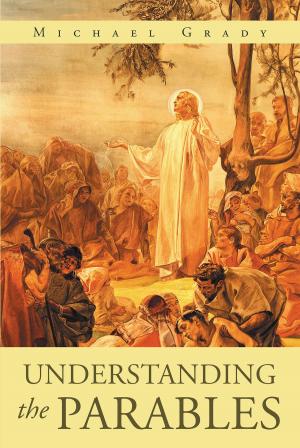Who Is My Neighbor?
An Extensive Commentary on the Good Samaritan Parable
Nonfiction, Religion & Spirituality, Bible & Bible Studies, Criticism & Interpretation| Author: | Corey Johnston | ISBN: | 9781640794078 |
| Publisher: | Christian Faith Publishing | Publication: | December 5, 2017 |
| Imprint: | Language: | English |
| Author: | Corey Johnston |
| ISBN: | 9781640794078 |
| Publisher: | Christian Faith Publishing |
| Publication: | December 5, 2017 |
| Imprint: | |
| Language: | English |
One of the most profoundly influential and immortal parables ever recounted by the Savior is the parable of the Good Samaritan. In this story, the Messiah expounds upon what constitutes the nature of true religion, which consists in the willful extension of charity and mercy, in the performance of acts of love and in bringing the greatest good to others. The parable also proves that the performance of deeds of righteousness very often comes from the unlikeliest of characters, in strange, unexpected places to provide for us in ways that utterly transcend our narrow definitions or limited expectations. And no more than we should not discount any human being as unworthy of our services should we deny or underestimate that any other has the capacity to initiate or reciprocate such graces.
Though rich in interest as a story in itself, especially as an embodiment of profoundly precious lessons on the nature of love in action and at face value is both dramatic and practical in the obvious application of its meaning, there is a time honored interpretation taught by the ancient assembly and preserved throughout the Middle Ages that brilliantly encapsulates the plan of salvation in such a way that has lost its metaphorical meaning in modernity. The parable of the Good Samaritan testifies of the plan of salvation, the Savior’s atoning love and our journey toward eternal life. It can not only be read as a story of a man who went down from Jerusalem to Jericho but also about all who come down from the heavenly presence of the Father to live on earth. The story has a universal application for all of humanity that is as relevant and necessary today as it was when it was first declared. This meaning becomes more visible as it was formerly taught and understood by the early Church fathers, an interpretation the author resurrects and elucidates upon.
One of the most profoundly influential and immortal parables ever recounted by the Savior is the parable of the Good Samaritan. In this story, the Messiah expounds upon what constitutes the nature of true religion, which consists in the willful extension of charity and mercy, in the performance of acts of love and in bringing the greatest good to others. The parable also proves that the performance of deeds of righteousness very often comes from the unlikeliest of characters, in strange, unexpected places to provide for us in ways that utterly transcend our narrow definitions or limited expectations. And no more than we should not discount any human being as unworthy of our services should we deny or underestimate that any other has the capacity to initiate or reciprocate such graces.
Though rich in interest as a story in itself, especially as an embodiment of profoundly precious lessons on the nature of love in action and at face value is both dramatic and practical in the obvious application of its meaning, there is a time honored interpretation taught by the ancient assembly and preserved throughout the Middle Ages that brilliantly encapsulates the plan of salvation in such a way that has lost its metaphorical meaning in modernity. The parable of the Good Samaritan testifies of the plan of salvation, the Savior’s atoning love and our journey toward eternal life. It can not only be read as a story of a man who went down from Jerusalem to Jericho but also about all who come down from the heavenly presence of the Father to live on earth. The story has a universal application for all of humanity that is as relevant and necessary today as it was when it was first declared. This meaning becomes more visible as it was formerly taught and understood by the early Church fathers, an interpretation the author resurrects and elucidates upon.















